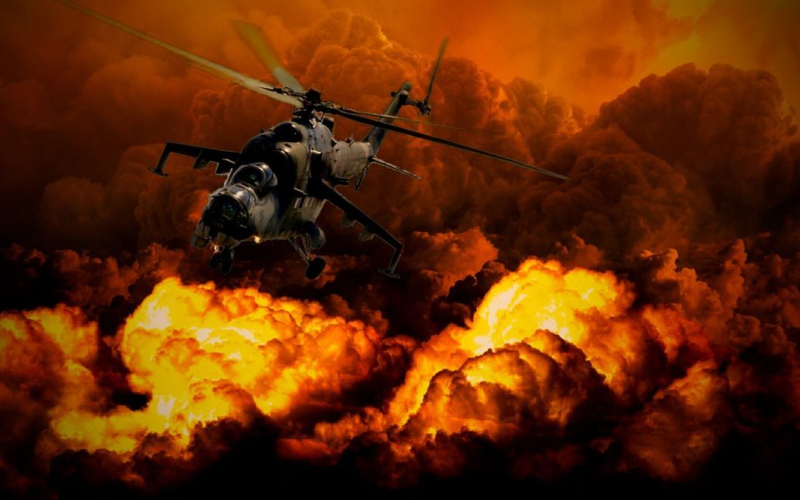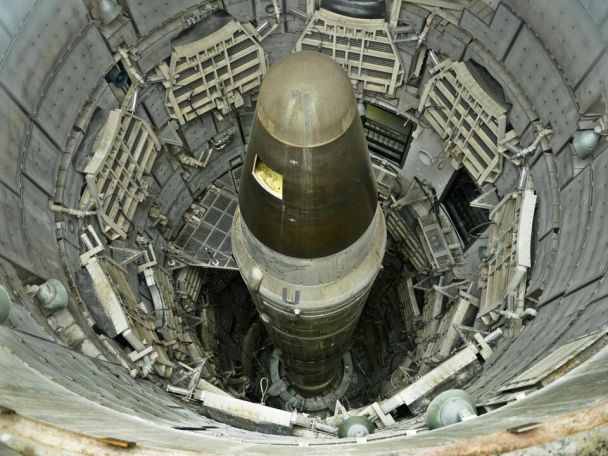
The US West Coast states will be at the slightest risk.
New modeling suggests that an attack on US missile silos would kill millions of people due to acute radiation poisoning and the spread of radioactive fallout across the country.
Newsweek writes about this.
A study published Nov. 14 by Scientific American found that if the strategic launch bases were hit, much of the Midwest would be exposed to a more lethal dose of radiation, and in a worst-case scenario, much of the United States and Canada would be rendered uninhabitable.
How many people can die
Researchers at Princeton University's Science and Global Security Program estimate that between 340,000 and 4.6 million people will die in the first four days after the vaults explode, although the average death toll will be 1.4 million. They foresaw that 300 million people would be at risk of a lethal dose of radioactive fallout.
Missile replacement plan
The study comes after the US Air Force said last year it would replace its Minuteman III intercontinental ballistic missiles (ICBMs), in service since the 1970s, with more modern Sentinel missiles starting in 2029.

The $1.5 trillion plan would replace all 400 old missiles. Although the range and payload of Sentinel ICBMs have not been officially released, they are believed to have an equivalent explosive yield of 800 kilotons of TNT and are expected to reach up to 10,000 km and be capable of hitting any target anywhere. minutes.
Minuteman missiles have a range of almost 13,000 km and carry an estimated payload equivalent to 170-335 kilotons – enough to effectively destroy all of Washington, DC.
The Princeton researchers note that while the US Air Force assessed the potential impact of Sentinel deployment on people and the environment, it did not mention what would happen if missiles struck its bases.
Deterrents for the enemy
A Defense Department spokesman told Newsweek that while he had not had a chance to review the report and could not directly respond to its findings, the Sentinel system would not increase the risk to the United States.
“The 2022 Nuclear Posture Review makes it clear that a nuclear war cannot be won and should never be fought,” they said. “To this end, the best deterrent to an adversary initiating nuclear war against the United States or its allies or partners is a secure, credible, and effective nuclear deterrent force and a strong and credible extended deterrent force.”
US nuclear missile bases are located in five states – Colorado, Wyoming, Nebraska, Montana and North Dakota – and are part of a nuclear “triad” that gives the US the ability to launch nuclear strikes from submarines and aircraft if one of the links is compromised. .
The researchers note that in order to reach nuclear missiles in storage facilities buried underground and sealed with blast doors, one or two one-kiloton warheads would have to land next to them.
Which states have the smallest and greatest risk?
Using historical weather data over 48-hour periods over multiple dates in 2021 to model the expected radioactive plume, scientists found that West Coast states have the lowest risk due to prevailing easterly winds.
However, depending on the exact direction of the wind, heavy radioactive fallout could fall on any part of the United States and Canada east of Idaho. Based on weather conditions, on December 2, 2021, Chicago, Illinois and the District of Columbia, among other communities, will be on a direct path to a lethal dose of radiation.
In the worst case scenario, nearly all of Montana and North Dakota, as well as parts of Nebraska, Colorado, Wyoming, South Dakota and Kansas, would receive more than 10 times the lethal dose, causing death in a matter of days. Most of the population in the Midwest would have received a lethal dose, while in other places death would have occurred within weeks.
The researchers found that most people living in North America had a one percent chance of receiving a radiation dose outdoors sufficient to cause acute radiation poisoning and death.
“These are not risks we should take”
The modeling makes its predictions based on the assumption that all silo-based missiles would be hit, but the report notes that its predictions were already supported by a 1990 Federal Emergency Management Agency assessment that found no part of the US was beyond a lethal level of risk radiation. .
“These maps send a clear message that many nuclear safety and environmental experts we spoke with agree with: These are not risks we should be taking,” said Laura Hellmuth, editor-in-chief of Scientific American.
While the Pentagon notes the need for America to have a functioning nuclear arsenal to deter other nuclear-armed states, some have questioned the cost and necessity of a new missile program given the system's periodic misfires and the development of U.S. submarine and air strike capabilities.
“There is only one way to win the arms race”
In an accompanying article, Scientific American cited former Secretary of Defense William Perry's 2016 comment that “there is only one way to win the arms race: by not participating in it,” adding that “there will never be a way to win the arms race”: “ The only real way to use nuclear weapons is to never do it. It should only exist in sufficient quantities to deter others from using it, which they already do to a sufficient extent without having one more warhead.”
A US Department of Defense spokesman said that “the attributes of each leg of the triad are complementary, ensuring that the United States can counter and respond to any strategic attack.”
“After careful analysis, the 2022 Nuclear Posture Review confirmed that combining all three components of the U.S. nuclear triad is the best approach to maintaining strategic stability at a reasonable cost while reducing the risk of potential technical, software, or other problems or vulnerabilities,” it added. US Department of Defense.
“Silo-based ICBMs have been a core element of the triad for more than 60 years, and replacing the Minuteman III ICBM system with the Sentinel ICBM system does not increase the risk to the United States,” the Department of Defense says.
Let us recall that researchers from the non-profit organization Future of Life Institute simulated the alleged nuclear conflict between the United States and Russia.
Read also:
Related topics:
More news

